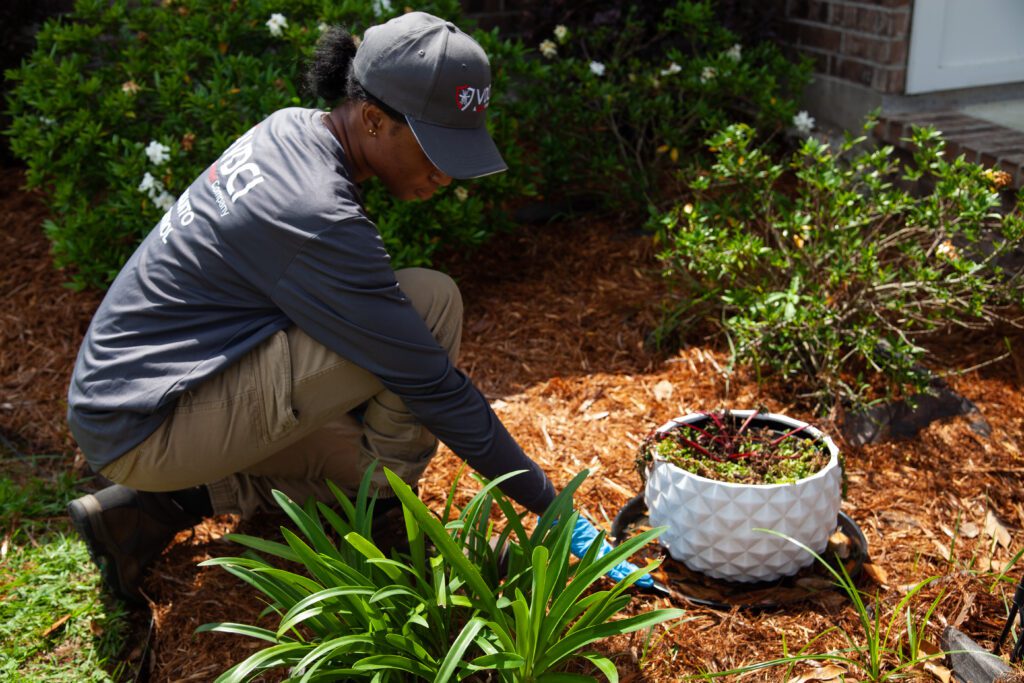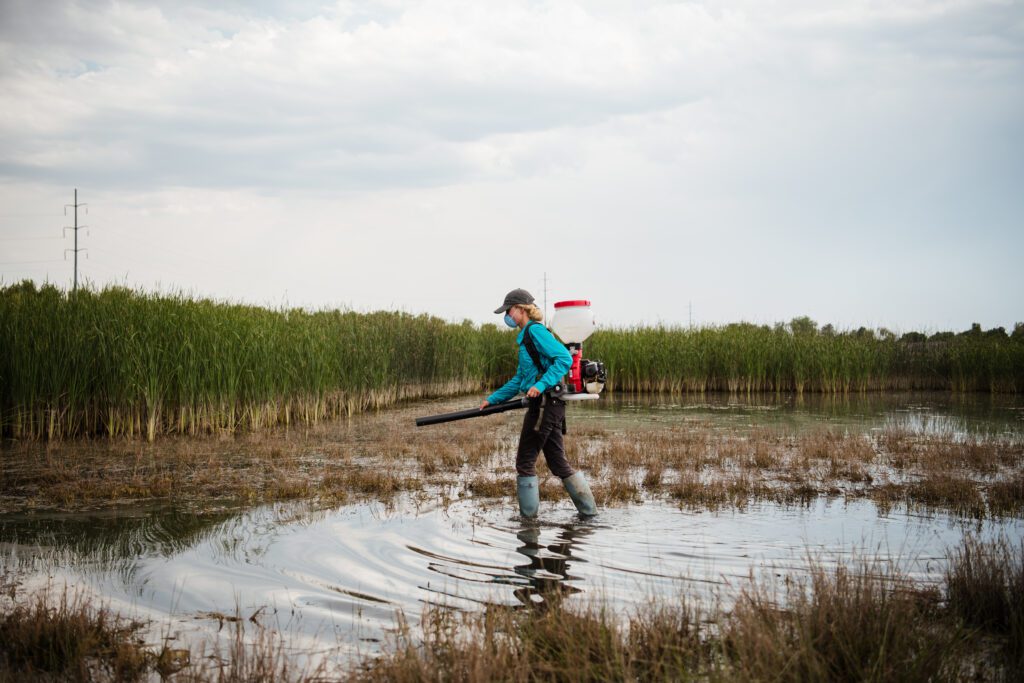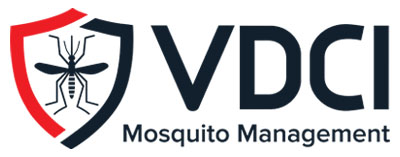Larviciding as Part of a Mosquito Management Program
Persistent buzzing and itchy bites make mosquitoes a nuisance for many communities. Unfortunately, these pests are more than just an annoyance; their ability to transmit diseases make these tiny insects one of the world’s deadliest animals. Mosquitoes are vectors for various diseases, including malaria, yellow fever, dengue fever, Eastern equine encephalitis, and West Nile virus. The World Health Organization estimates that mosquitoes are responsible for over 700,000 deaths worldwide each year. This makes targeted mosquito control efforts essential.
One effective strategy in mosquito management is the use of larvicides. Mosquito larvicides are chemical or biological agents specifically designed to target and kill mosquito larvae in their breeding habitats before they can mature into adult mosquitoes. By disrupting the life cycle of mosquitoes at this early stage, larvicide treatments can significantly reduce adult populations and, consequently, the risk of disease transmission.
So, are larvicide treatments on their own effective for mosquito control?
While larviciding is an excellent way to help proactively manage mosquito populations and prevent disease transmission, larvicide applications alone won’t control all mosquitoes and shouldn’t be relied on as the sole control strategy. Larvicide applications play an important role in an Integrated Mosquito Management (IMM) program and should be utilized strategically.
Let’s explore how to identify areas where larvicide applications would be needed, how larvicide applications are conducted, and other methods you can utilize to reduce mosquito larvae.

Where do mosquitoes breed?
Mosquitoes breed in a variety of habitats, and their breeding preferences can vary among mosquito species. Standing water sources, such as ponds, lakes, swamps, and marshes, provide ideal conditions for many mosquito species to lay their eggs. These natural bodies of water often support an ecosystem that encourages mosquito development. Some species, like Aedes aegypti and Aedes albopictus, prefer artificial containers and can breed in water as small as a bottle cap. Everyday items like bird baths, flowerpots, old tires, and buckets can collect rainwater and become breeding grounds for mosquitoes.
Regular surveillance allows experts to identify these habitats and note which locations have abundant larvae. This information helps guide management decisions, ensuring larvicides are only applied when necessary and in the appropriate locations.
Larvicide treatments and source reduction
Once a breeding site is identified, larvacide applications can be used to control mosquito populations in the given area. Larvicides are substances specifically designed to target and kill mosquito larvae before they mature into adult mosquitoes. These treatments typically work by disrupting the growth and development of mosquito larvae. There are several types of mosquito larvicides, including bacterial larvicides and insect growth inhibitors. The type of mosquito larvicide used will depend on treatment needs, habitat, and the mosquito species targeted, as each species responds differently to larvicides. Larvicides can be used in various forms, such as granules or liquid concentrates, allowing for flexible application depending on the breeding site. A variety of application methods are also available depending on the habitat and distribution needs. Ground applications utilize backpack sprayers and other hand-held devices. Aerial applications are also available through drones and planes.
Before and after mosquito larvicide applications, it’s important to test larvae for insecticide resistance to determine if applications are effective and if any changes to the treatment plan need to be made.

Source reduction can also be used to proactively control mosquitoes by removing or modifying these breeding sites to prevent standing water, helping reduce breeding habitats. For example, removing debris from stormwater ditches to keep water flowing will help reduce a mosquito’s ideal breeding habitat. In addition, educating the public on how they can reduce breeding habitats in their own backyard can make a significant impact on a successful mosquito management program. Encouraging citizens to properly dispose of old tires or dump standing water from buckets or plant saucers can help reduce breeding sites around their homes, thus reducing the number of adult mosquitoes available to transmit disease.
It’s important to note that although larvicides effectively reduce mosquito populations, they cannot completely eradicate all mosquito populations. An effective mosquito control program requires the use of both larvicides and adulticides to target mosquitoes at all life stages, as well as, regular surveillance, lab analysis, and public education.
Creating a comprehensive mosquito control plan
Creating a mosquito control plan can have its challenges. Mosquitoes have a remarkable ability to reproduce in the smallest bit of standing water, which makes the complete elimination of breeding habitats difficult. That’s why the importance of a comprehensive mosquito control program cannot be overstated. A successful mosquito control program should combine various strategies, including larvicide treatments, source reduction efforts, adulticide applications, regular insecticide resistance monitoring, and educating citizens on ways they can reduce breeding sites around their homes. When you work with VDCI to implement an (IMM) plan, you can help control mosquito populations and reduce the risk of disease transmission in your community.
Contact Our Experts
Complete the form below or call us at 800-413-4445 to speak to an expert about your mosquito management needs.
 Since 1992, Vector Disease Control International (VDCI) has taken pride in providing municipalities, mosquito abatement districts, industrial sites, planned communities, homeowners associations, and golf courses with the tools they need to run effective mosquito control programs. We are determined to protect the public health of the communities in which we operate. Our mosquito control professionals have over 100 years of combined experience in the field of public health, specifically vector disease control. We strive to provide the most effective and scientifically sound mosquito surveillance and control programs possible based on an Integrated Mosquito Management approach recommended by the American Mosquito Control Association (AMCA) and Centers for Disease Control and Prevention (CDC). VDCI is the only company in the country that can manage all aspects of an integrated mosquito management program, from surveillance to disease testing to aerial application in emergency situations.
Since 1992, Vector Disease Control International (VDCI) has taken pride in providing municipalities, mosquito abatement districts, industrial sites, planned communities, homeowners associations, and golf courses with the tools they need to run effective mosquito control programs. We are determined to protect the public health of the communities in which we operate. Our mosquito control professionals have over 100 years of combined experience in the field of public health, specifically vector disease control. We strive to provide the most effective and scientifically sound mosquito surveillance and control programs possible based on an Integrated Mosquito Management approach recommended by the American Mosquito Control Association (AMCA) and Centers for Disease Control and Prevention (CDC). VDCI is the only company in the country that can manage all aspects of an integrated mosquito management program, from surveillance to disease testing to aerial application in emergency situations.

